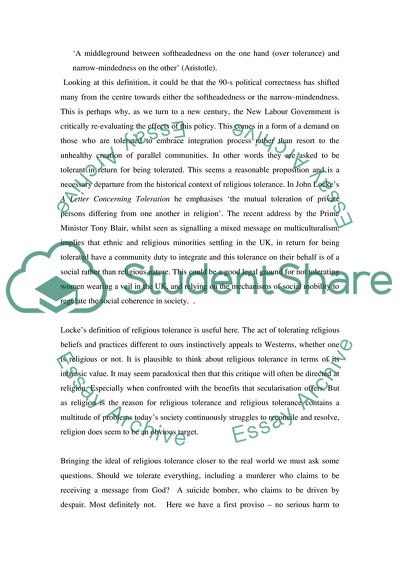Cite this document
(Religious Tolerance Case Study Example | Topics and Well Written Essays - 2750 words, n.d.)
Religious Tolerance Case Study Example | Topics and Well Written Essays - 2750 words. Retrieved from https://studentshare.org/religion-and-theology/1705897-religious-tolerance-and-its-limits
Religious Tolerance Case Study Example | Topics and Well Written Essays - 2750 words. Retrieved from https://studentshare.org/religion-and-theology/1705897-religious-tolerance-and-its-limits
(Religious Tolerance Case Study Example | Topics and Well Written Essays - 2750 Words)
Religious Tolerance Case Study Example | Topics and Well Written Essays - 2750 Words. https://studentshare.org/religion-and-theology/1705897-religious-tolerance-and-its-limits.
Religious Tolerance Case Study Example | Topics and Well Written Essays - 2750 Words. https://studentshare.org/religion-and-theology/1705897-religious-tolerance-and-its-limits.
“Religious Tolerance Case Study Example | Topics and Well Written Essays - 2750 Words”. https://studentshare.org/religion-and-theology/1705897-religious-tolerance-and-its-limits.


